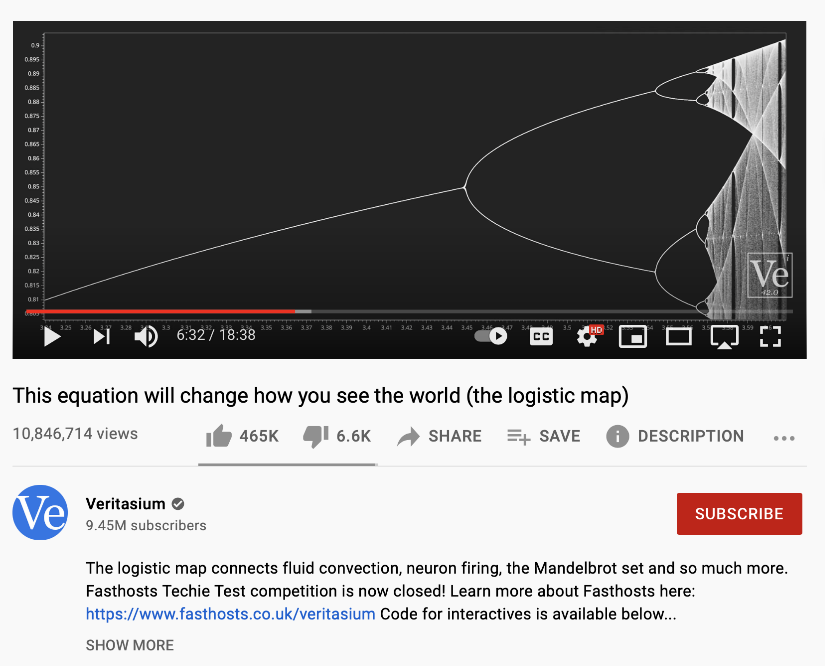Difference Equations
Difference Equations
Difference Equations
Most of what we will be looking at will be differential equations. However, dynamical systems can be written in the form of something called a difference equation. This equation has no derivatives, but can be thought of as taking discrete time-steps.
For instance: What is the population of my rabbits today (i) given what it was yesterday (i-1).
This could be written as:
P
i
P
i-1
So if the population on a particular day is then that on the day before is .
i
P
i
P
i-1
I’ve done this for a single variable, but we could think about having two different populations (let’s say of rabbits and wolves, which we will label and )
R
W
R
i
R
i-1
W
i-1
W
i
R
i-1
W
i-1
So now we have two functions and and they determine the populations of rabbits and wolves on a given day given the populations on the day before.
f
g
There are no derivatives here because we have discretized time. It just jumps by a single day (or year, or millennium, depending on how you set up your equations), rather than moving along continuously.
One might imagine that such a system is less interesting that a continuous system of differential equations, but it turns out that there are some truly magical things that happen with even the simplest of such difference equations:
x
i
x
i-1
x
i-1
where is a constant. This is known as the Logistic Map. I have written a whole lecture about this here (We’ll come back to this later).
r
How on earth could this give anything interesting at all? Well, I would go so far as to say that this is one of the most beautiful equations of all time. Take a look at this video to see why.
JonathanShock,UniversityofCapeTown2021jon.shock@gmail.com
JonathanShock,UniversityofCapeTown2021jon.shock@gmail.com

